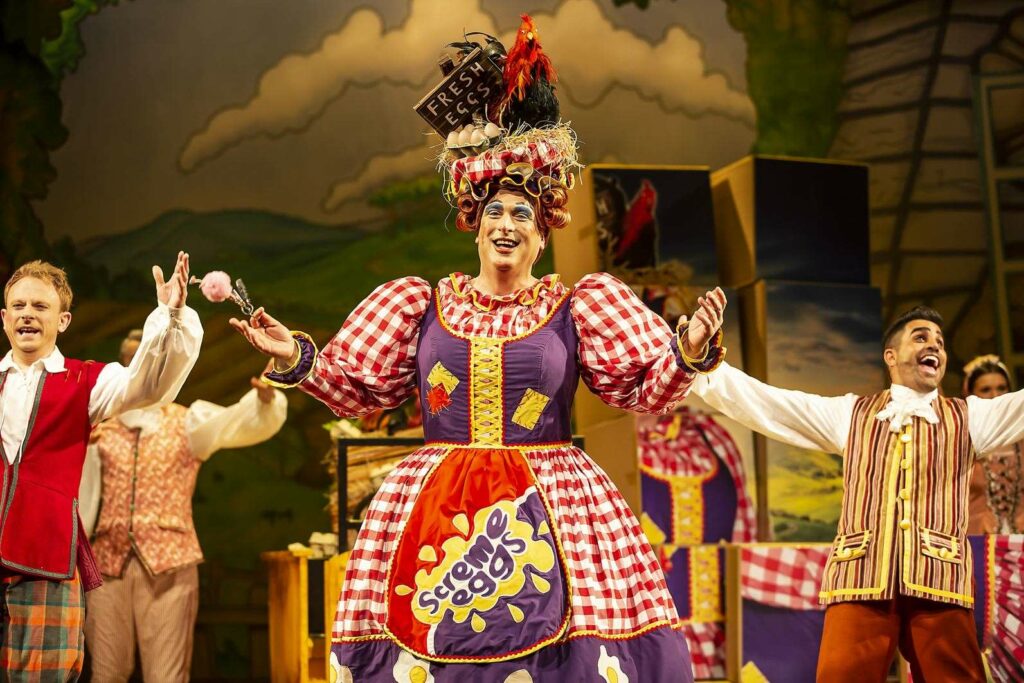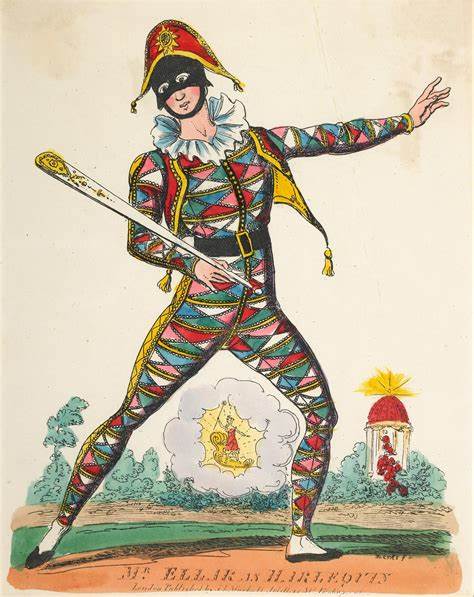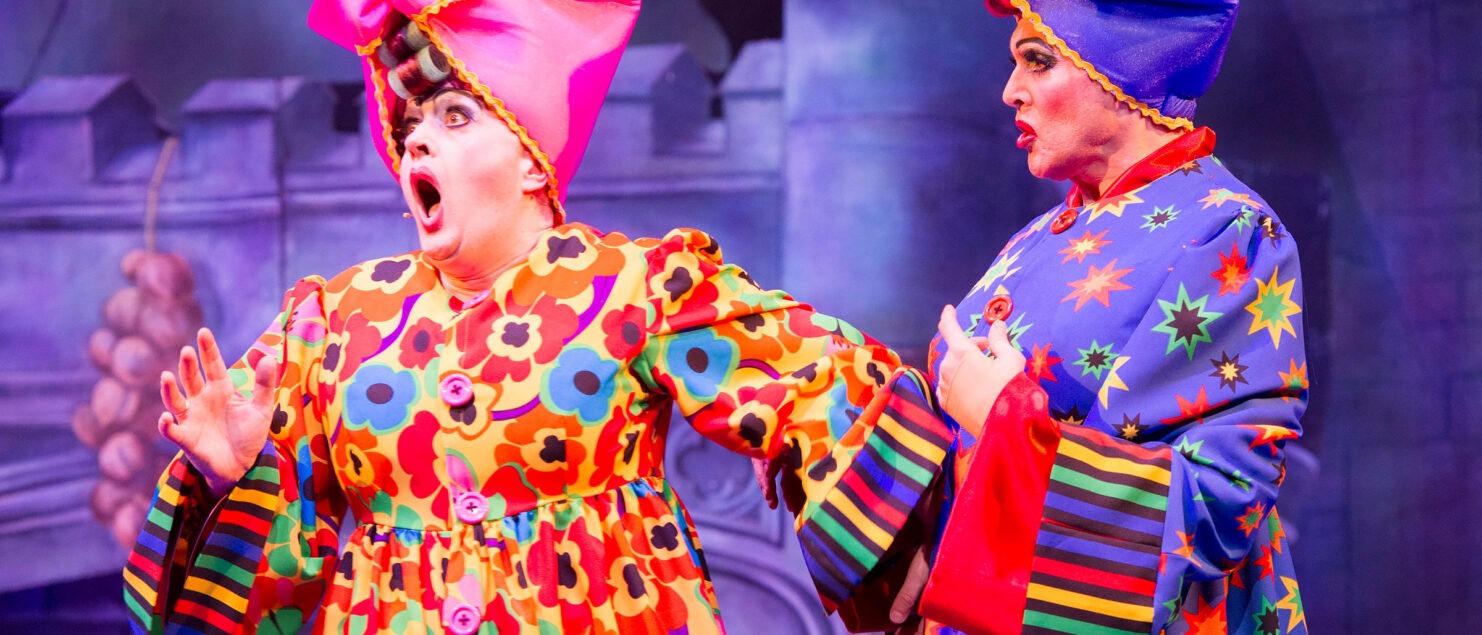Pantomime
Here in London, pantomimes are a true Christmas tradition! Theatres showcase their best productions, and families come together to enjoy their annual pantomime.
But what exactly is a pantomime? Where does this tradition come from?
Explanation!
What is a pantomime ?
The term comes from the Greek « Pantomimos », meaning « imitator of all things ». Inspired by the Commedia dell’Arte (Italian drama mixing improvisation, costumes and comedy), a pantomime is a burlesque show with influences from music-hall, masquerades and Harlequinade.
The characteristics of pantomime? Here they are:
- Role reversals: men playing women and vice-versa.
- A revisited fairytale : a story of good vs evil, full of farce and buffoonery
- Audience participation : shouting, singing and having fun with the performers.
- Eccentric costumes and dances accompany this show lasting about 2h30, designed for children but beloved by everyone!
- No playback ! Artists sing and play in direct, often with a celebrity put forward in order to attract the public.
- And the icing on the cake: the Stars! Theatres bring forward popular artists in order to promote their pantomime, and the script is tailored to showcase the star’s talents, even when it’s unrelated to the plot!

Be careful not to confuse pantomime with mime! Mime is based on silent gestures, whereas pantomime has dialogues, singing and magic. It is quite different, so why do we confuse them?
Because of their history!
The history of pantomime
Let’s have a look at the origins of all of this…
In Medieval England, the “Mummers’ Plays”, traditional Christmas performances, laid the foundation for pantomime: role reversals, fantastical creatures, and the ultimate triumph of good over evil.
In the 18th century, the term “pantomime” was first introduced by John Rich, the manager of the Lincoln’s Inn Theatre in London.
In 1702, John Weaver produced the first English pantomime, Tavern Bilkers… with no success.
Then, in 1717, John Rich (known as the father of pantomime), introduced Harlequin into his performances. This colourful, silent character, a master of magic and dance, marked a turning point: pantomime finally found its audience!

Until 1843, these performances were silent (or “dumb shows”) because spoken theatre was only allowed in two or three licensed theatres in London, until Parliament lifted this restriction in that year. English pantomimes remained largely visual for several decades before the introduction of dialogue. Now you understand the confusion between pantomime and mime!
After this, many artists added their personal touch, shaping the pantomime we know today. For example, David Garrick modernised the format: he introduced speech for characters, and producing pantomimes exclusively during the Christmas season.
In the 19th century, James Planché and Henry James Byron enriched the tradition by incorporating fairy tales, puns, and wordplay. This period saw the pantomime grow into a richer, more humorous, and whimsical form of theatre. Since then, it has continued to evolve, embracing spectacular effects and modern staging.
And now…?
The popularity of pantomime
If pantomime is so beloved, it is because of its universal attraction! Kids love these magical stories, and adults come back every year to share nostalgic moments as a family or between friends. It’s a hallmark the festive period!
Many celebrities have taken part in a pantomime, such as Ian McKellen or Henry Winkler. The Great British Pantomime Awards even reward emblematic figures, like Christopher Biggins.
The audience is at the heart of this show: singing, shouting or encouraging the characters is an essential part of the experience.
Admit it, you now want to see a show, right?
So come and watch a pantomime, and if you do happen to see one, please do not hesitate to recommend it to us!
Personally, I can only recommend Act’in Theatre shows, and we also put on special Christmas show. Visit our calendar here! Who knows, we might create a new concept (an Act’in pantomime?)
I hope this article taught you many new facts!
Now that you know everything, please don’t hesitate to do our “knowledge test” below!



